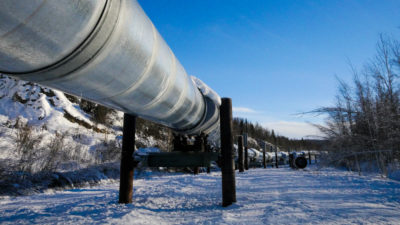By: Robert Zimmerman
In 2009, Cenovus Energy (TSX:CVE) was spun out of Encana. The idea was that Encana would focus on natural gas and Cenovus, oil. Cenovus investors have been on a roller coaster ride with the company rising to all-time highs of $40 a share in July 2011 and falling to just under $28 a share last June. The stock has since stabilized to around $30 a share, but where will it go from here? Fellow Fool Matt DiLallo has examined some of Cenovus’ strengths; here I’ll look at some of its weaknesses.
Deferred maintenance expenses
Deferred maintenance is like debt: Sooner or later it comes back to haunt you. During its most recent earnings conference call, Cenovus CEO Brian Ferguson specifically mentioned deferred maintenance at its Foster Creek oil sands play. By not performing this maintenance, production levels from this “cornerstone asset,” declined from 2012 to 2013.
While no specifics were offered, three things were clear: One, the catch-up maintenance adversely affected earnings during the third quarter. Second, the lost oil production also hurt earnings. Third, well maintenance will be an ongoing part of Cenovus’ operating costs. The company’s third-quarter report bore this out. Overall production, including other plays besides Foster Creek, declined 22% from the previous year and production expenses increased. Operating cash flow also decreased, but the company managed to increase profits by 28%.
This well maintenance faux pas highlights Cenovus’ problems as it optimizes its Foster Creek play. The company considers it a top tier asset that should be productive for years. How Cenovus works this asset will impact other oil sands assets in its portfolio.
Curiously, Ferguson stated that future capital expenditures will be lower than they were this past year, but he expected oil production to grow. How Cenovus grows production in the face of increased well maintenance costs, but reduced overall capital expenditures, will be interesting to watch.
Environmental concerns
Cenovus engages in oil production from the oil sands which have been implicated in a variety of environmental and health problems. First, extraction of oil requires large volumes of energy and water; the former produces pollution, the latter is contaminated by it. Specifically, environmentalists point out the greenhouse gases produced by the extraction process.
People living near oil sands operations speak of fouled rivers and strange smelling air. Related to the environmental concerns are the health concerns. Native people, in particular, have voiced concerns regarding higher cancer rates due to oil sands operations. The poisoning of fish and other wildlife poses additional risks to these people.
The Canadian government demands safeguards be in place to minimize the impact of oil sands production. These cost money and don’t necessarily satisfy everyone. The safeguards don’t always work, either. Some environmentalists describe Canada’s oil sands development and lack of proper regulation as “reckless.” I suspect the future will bring increased environmental costs for Cenovus and other companies producing oil from oil sands.
Take away capacity
Limited capacity to move oil from the field to the refinery plagues all of North America. Canada knows all too well that our economy suffers from not being able to export more of its oil at favourable prices. These pipeline constraints are not for lack of trying. Enbridge (TSX:ENB) operates the largest export pipeline network in Canada. All of its various pipelines feed into the United States. Enbridge hopes its proposed Northern Gateway pipeline will take oil to Kitimat for export to the world. This hope was bolstered by a recent agreement between the premiers of Alberta and British Columbia regarding pipelines, royalties, and negotiations regarding “appropriate economic benefits”. Unfortunately, this pipeline agreement in no way guarantees the Northern Gateway will win approval.
Kinder Morgan Energy Partners currently operates the only pipeline taking oil to Canada’s west coast. Its Trans Mountain pipeline moves 300,000 bbl/d, and Kinder Morgan wants to grow that. Specifically, it hopes to build a second pipeline on the existing right of way to expand capacity to 850,000 bbl/d. Kinder Morgan will also benefit from the pipeline agreement mentioned above. However, pipeline opposition continues, particularly in regard to spill cleanup issues.
Some of this backlog has been alleviated by rail transport. However, Canada has witnessed several oil car derailments over the past year. In fact, oil by rail is considered three times more dangerous than oil by pipeline. This will surely spur additional safety regulations in both Canada and the U.S. With these new regulations, expenses will surely increase. Given that any new pipeline capacity won’t come online until 2017, Cenovus will have to use rail to get its oil to market.
Final Foolish thoughts
Cenovus sits on a pile of oil. Unfortunately, the oil requires a rather messy process to extract. The messiness of oil sands translates into environmental and health concerns that will constantly dog the industry. Cenovus has proven it can extract this oil with an industry leading efficiency using steam assisted gravity drainage technology.
However, Cenovus shot itself in the foot by not properly maintaining one of its key assets. Even if Cenovus expands its oil production in a clean (or at least, cleaner) manner, the lack of take-away capacity will hinder profits until new pipelines come online.







